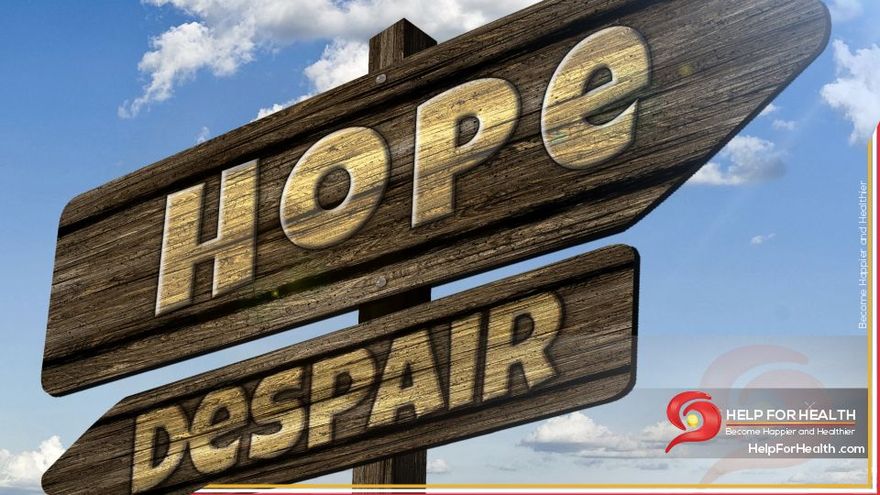Healing Psyche: False Hope doesn’t exist. In the fight against cancer many people use the term ‘false hope’. This doesn’t exist. Hope is real, Hope heals. Healing Psyche explains that hope is always real, and that there are always possibilities of healing. From every disease there are people who have somehow healed themselves.
This is a extract of
“Healing Psyche – Psychological Secrets for Effective Cancer Treatment
In their quest for health, clients are willing to try anything, hoping for a miracle cure. They often reason that they might as well try it because “they have nothing to lose.” Unfortunately, there is something to lose. Clients might gain a false sense of hope. They might lose interest in mainstream medicine or other complementary approaches. Finally, they might also be robbed of valuable time by pursuing an unsatisfactory therapy.
Complementary psychological therapy is often questioned on issues such as false hope. Some people are afraid that if cancer clients experience hope, they are fooling themselves, and will end up being disappointed. They think that as long as they are expecting the worst, they will not be disappointed. This is a form of false hopelessness. Such people like to call themselves realists, but are in fact pessimists.
Many people misinterpret the true value of an optimistic, pessimistic or realistic view of life. Pessimistic people view the world as a dark place, where there is only misery and everything is hopeless. They deny the positive side of things. Optimistic people view the world as one happy playground, where there is joy everywhere. They deny the negative side of life. Realistic people know that there are positive and negative aspects of everything in life. They fully accept both sides.
“No one really knows enough to be a pessimist.”
– Norman Cousins –
Pessimist: “My glass is almost empty.”
Optimist: “My glass is still full.”
Realist: “I have half a glass.”
When therapists work with the psychological issues that are described in this work, they are not providing false hope, but are assisting clients in being more realistic. Realistic hope is what is being communicated in this therapeutic approach.
Society and the medical team often issue some sort of death guarantee (although lesser every day) along with the diagnosis of cancer. Fortunately, this is not the case. There is no guarantee that one will die from cancer. On the other hand, there is also no guarantee that one will heal from cancer after the intervention. The issue of false hope only exists when the practitioner (medical or psychological) issues a guarantee that the client is healed after the intervention. False hope is thus only present as a false guarantee.
The presence of hope within clients is often associated with better health, and hopelessness is often a precursor for poor outcomes. Presenting hope, however, is no guarantee, but it assists the healing process.
Example:
When people marry, there is no guarantee that they will be happy. They hope they will be. This could be interpreted by a pessimist as false hope.
However, expecting the marriage to end in a few years is almost a guarantee that it will.
Hoping that one will be happy is no guarantee, but it surely helps.
Feelings of hope stimulate the placebo effect. The possible effects of a placebo cannot be denied, even in the context of cancer.
“Everybody knows that one dies of cancer, but I was not sure whether to apply this to myself. I considered this (belief) as nonsense.”
Quote from a spontaneous remission patient
– Daan van Baalen – (1987[1])
False hope does exist, and can be seen as focusing solely on unrealistic and unachievable results, while denying the current truth. Such unrealistic expectations lead to disappointment and feelings of guilt. Hope of healing is a realistic hope. Realistic or mature hope is accepting the current feelings, thoughts, relationships, and possibilities of improvement. Focusing solely on hopelessness and self-pity is just as unrealistic as only seeing a positive and bright future.
False hope
- “I only focus on the positive.”
- “I can do whatever I want.”
- “I can control everything.”
False hopelessness
- “I am wallowing in despair.”
- “I cannot control anything.”
- “Everything scares me and the disease and emotions are controlling me.”
Realistic hope
“Sometimes I feel awful, and other times I feel more connected to life and others than ever before.”
“There are some things beyond my control. Yet, there are many things I can control.”
“I choose to live as fully as possible now. The quality of my life may be related to my physical health, but however long I may live, I plan to do it to the fullest of my ability.”
Hope triggers actions, and stimulates well-being. Without hope, people do not take action towards their well-being. Hope is a supporting emotion as well as a drive to trigger positive actions towards increased self-control.
Solano et al. (1993[2]) studied the relationship between psychosocial situations and the probability of symptom development. They concluded that “The
best attitude with regard to prognosis appears to be full recognition of
one’s situation and a decisive will to do something about it.” This conclusion is supported by many other authors. Hopelessness triggers inaction and letting things happen. Hope triggers the decisive will to take action.
“TRUST IN GOD AND TIE YOUR CAMEL TO A TREE.”
– MUHAMMAD –
Read more … ?
Order the entire book
[1] Baalen, van, Daan C. & Vries, de, Marco J. (1987) Spontaneous regression of cancer – A clinical, pathological and psycho-social study, Rotterdam: Erasmus University
[2] Solano, L. & Costa, M. & Salvati, S. & Coda, R. & Aiuti, F. & Mezzaroma, I. & Bertini, M. (1993) ‘Psychosocial factors and clinical evolution in HIV-1 infection – a longitudinal study,’ J. of Psychosomatic Research, 37(1):39-51


